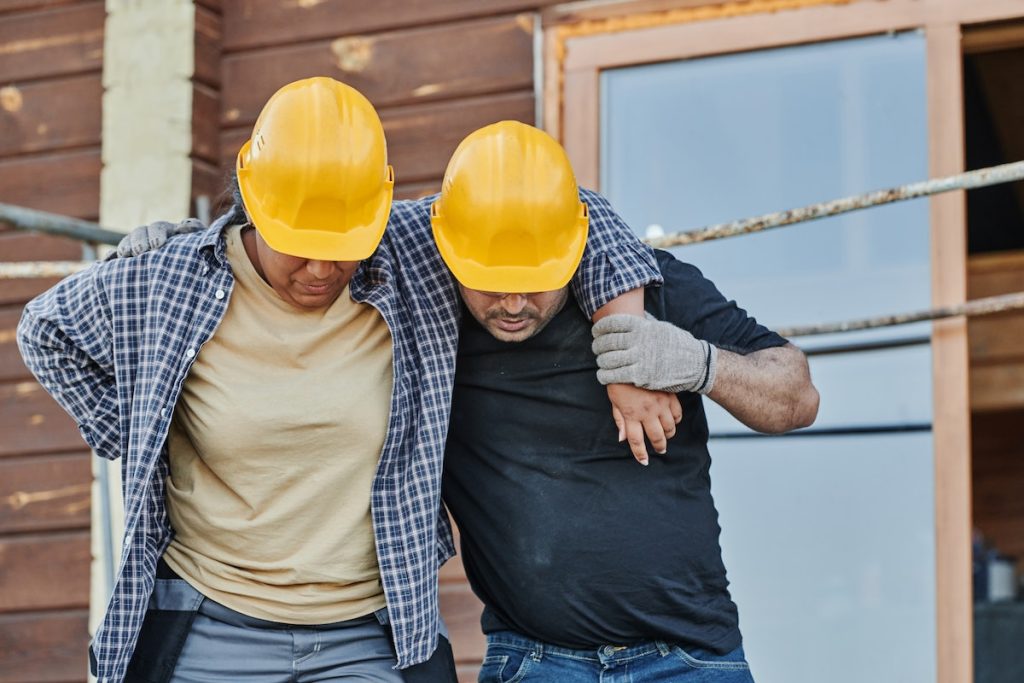The construction industry accounted for one in five workplace fatalities in 2020. Of these deaths, approximately one-third were due to slips and falls, resulting in a fall at a lower level. The figure is equivalent to 46.1 percent of all hazardous slip/fall-related instances that year. This figure has remained consistent over the preceding years.
Construction is a high-risk industry. The vast majority of these accidents could have been prevented through proper safety protocols and preventative measures. This article will provide an overview of the most common construction site hazards and outline the strategies construction businesses can employ to reduce the risk of these accidents.
Common Causes of Construction Site Injuries
The three most common causes of construction site injuries are falls, being struck by objects, and electrocution. Falls are the leading cause of work-related fatalities among construction workers. It claimed around 36 percent of all deaths in 2019. Approximately 10 percent of all fatalities in this industry are attributed to being struck by falling objects–an occurrence that should never happen. Data from OSHA showed that around eight percent of all fatalities in the construction industry are attributed to electric shocks resulting from contact with electrical equipment.
But these three accidents are not the only risks. Every year, workers face a variety of dangers while working on job sites. These include overexertion caused by heavy lifting and repetitive motions, exposure to hazardous substances or materials, getting caught in equipment or machinery, and slipping or tripping accidents.
Safety Protocols & Procedures
The first step in preventing work-related accidents on construction sites is to establish comprehensive safety protocols and procedures that all employees must adhere to at all times. These should include detailed instructions on how to properly operate machinery and equipment and guidelines for working at heights and in hazardous environments. It’s also essential to ensure workers are provided with appropriate Personal Protective Equipment (PPE) when necessary.
Aside from PPEs, construction companies should also provide their employees with additional safety measures. One safety measure is reliable fall protection equipment to ensure their safety at the construction site.
They should also install warning signs and barriers around dangerous areas to alert workers of potential hazards. Furthermore, employers must regularly inspect the equipment used on-site and ensure that it is in good condition before use.

Clear Communication
Clear communication channels should be established between management and employees to ensure safety protocols are followed. A qualified professional should also conduct regular safety inspections to identify potential hazards and take the necessary actions to mitigate these risks. Any accidents or incidents should be reported immediately, so the responsible parties can be identified and corrective measures implemented promptly.
Finally, construction companies should conduct regular emergency drills and create a comprehensive evacuation plan to ensure the safety of their workers in case of an emergency. Additionally, employees should regularly be informed about the emergency plans’ details.
Overall, safety protocols and procedures are essential for preventing work-related accidents on construction sites. These protocols and procedures can help reduce the risk of workplace injuries and ultimately ensure a safe working environment for everyone involved if they are properly followed.
Training & Education Programs
Construction businesses should also invest in providing their employees with regular training programs focused on safety practices and protocols. These programs should cover ladder safety, electrical hazards awareness, fall protection systems, scaffolding requirements, working safely with hand and power tools, etc.
Employers should also consider offering additional education opportunities for workers who want to become certified safety professionals or take advanced workplace accident prevention courses. By investing in education and training programs, employers can help ensure that their workers have the knowledge they need to stay safe and healthy while on the job. This type of investment also helps increase employee morale and productivity.
Culture of Safety
Businesses should also strive to create a culture of safety in their workplaces. This means encouraging employees to report any unsafe conditions or practices and providing feedback to workers when they notice safe behaviors. By creating a culture of safety, employers can help ensure that their employees are aware of the importance of following safety protocols and doing their part to minimize the risk of accidents in the workplace.
One way to bolster a company’s culture of safety is to provide incentives for workers who go above and beyond in promoting safe practices. This could include offering bonuses or other rewards for employees who actively practice safe behaviors, such as always wearing protective gear or using tools correctly. Employers can also regularly recognize workers with safety awards or certificates to encourage them to keep up their good work.
Accidents happen every day on construction sites across the country—but they don’t have to! By implementing comprehensive safety protocols and procedures alongside effective training programs and educational opportunities for workers, business owners can significantly reduce the risk of work-related accidents occurring on their job sites. These proactive steps can help protect your employees while increasing productivity—a win-win situation.



